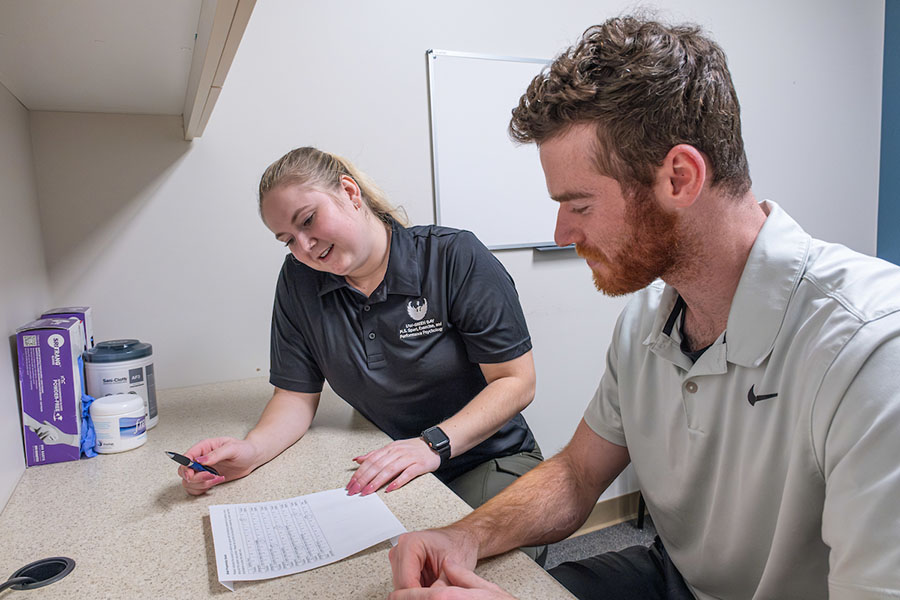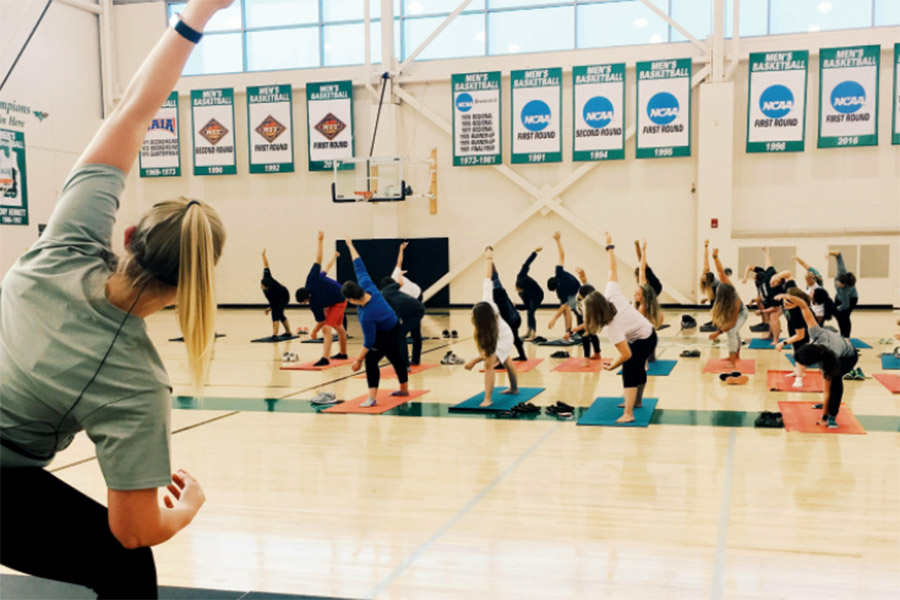Guidelines
Where Should I
Start?
We can help you develop an exercise plan.
Finding time to exercise can be hard, whether you're a student or staff member. That's where we come in. Our team at Exercise is Medicine can help you develop a plan to become a more active person. Plus, you can access exercise guidelines below to get a move on moving before you meet with us.

Fast Facts
Learn how to stay healthy.
How Much Should I Exercise?
Any amount of exercise is better than nothing, but experts suggest at least 150 minutes to 300 minutes a week of moderate-intensity or 75-100 minutes of vigorous-intensity aerobic activity per week.
What Should I Do?
Aerobic exercise, or exercise that gets the heart beating, should be spread throughout the week. You should also try to incorporate muscle-strengthening activity, like lifting weights or doing push-ups, at least 2 days each week.
Should Kids Exercise?
Yes! Preschool-aged children should engage in about 3 hours of active play per day, while youth ages 6 - 17 need at least 60 minutes of moderate-to-vigorous activity, like climbing, playing basketball and jumping rope.

Make It Smart
We're here to help, no matter your goals.
Maybe you want to walk for 30 minutes a day. Or you want to squat a certain amount of weight. Or you want to place in the top 3 of a marathon. Whatever your goal, make it SMART: specific, measurable, action-based, realistic and time-based.
Be Safe & Have Fun!
To do physical activity safely and reduce risk of injuries and other adverse events, you should:
1Choose What's Best For You
Choose types of physical activity that are appropriate for your current fitness level and health goals, because some activities are safer than others. Even a 15-minute walk or light stretching has health benefits.
2Start Low & Go Slow
Increase physical activity gradually over time to meet key guidelines or health goals. Inactive people should "start low and go slow" by starting with lower intensity activities and gradually increasing how often and how long activities are done.
3Use the Right Gear
Protect yourself by using appropriate gear and sport equipment, choosing safe environments, following rules and policies and making sensible choices about when, where and how to be active.
4Talk to Your Healthcare Provider
Consult a health care professional or physical activity specialist about the types and amount of activity appropriate for you, especially if you have chronic conditions.

Fun-Size
Movements
A little goes a long way.
Shorts breaks for physical activity can boost our mental and physical health in a variety of ways. Quicks activity breaks can help us focus, increase productivity, reduce stress, improve posture, improve blood flow throughout the body, and so much more! Take a quick timeout from your desk to follow along with our fun size mobility movement videos to get that body moving!

Meet a
Phoenix
"What I loved most about Exercise is Medicine was being part of a larger movement. I enjoyed finding ways to educate students on campus and develop creative ways to implement programming. Since exercise can be challenging for busy students, I was passionate about creating accessible and free fitness opportunities for them. I also really enjoyed our in-person walks, where I had the chance to meet many students and build meaningful connections."
Lexi Ahrens '22
Master's Degree in Sport, Exercise & Performance Psychology | Special Olympics Idaho

Ask an Expert
Meet Joanna Morrissey, chair of the Sport, Exercise & Performance Psychology Program and advocate for Exercise is Medicine. Her research focuses on how thoughts, emotions, behaviors and culture influence sport and exercise participation and overall quality of life. If you have questions about Exercise is Medicine, she can help!